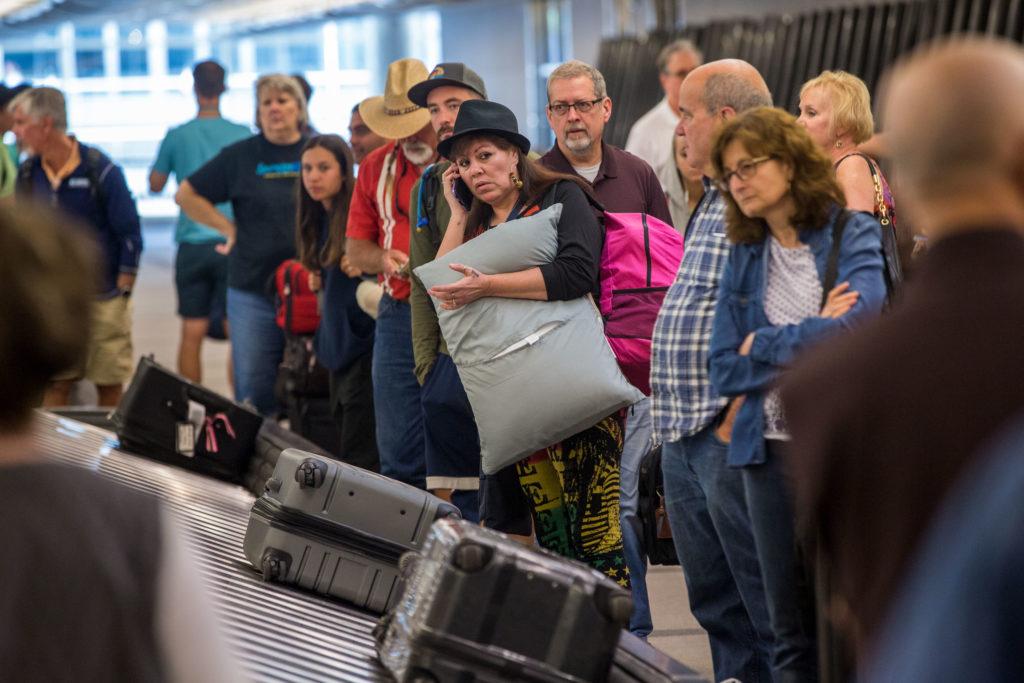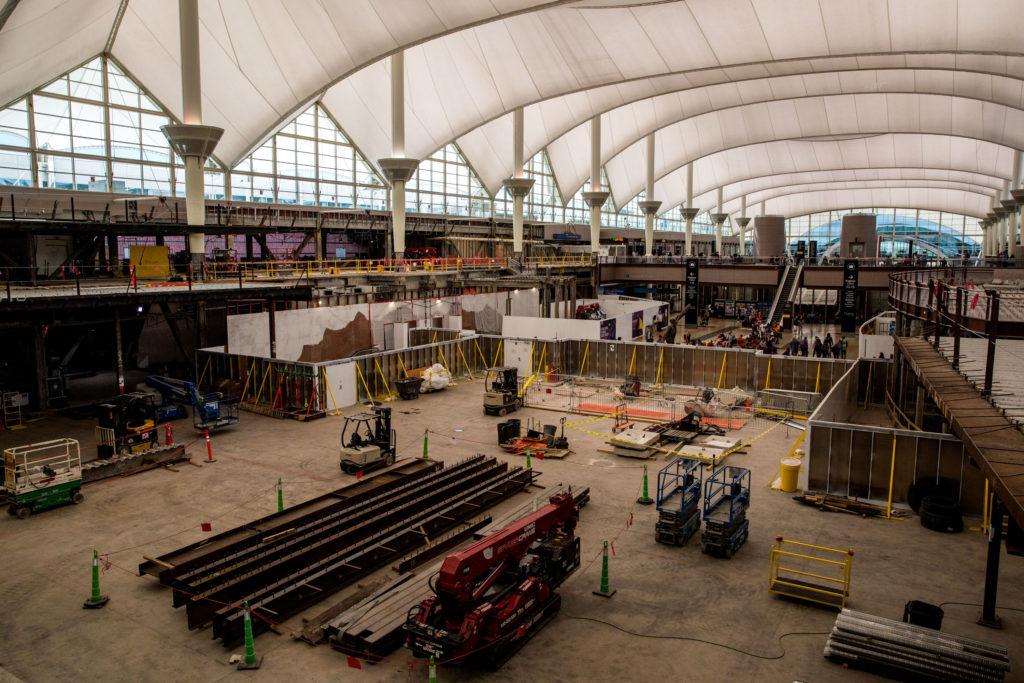
Standing in the main hall of Denver International Airport on a Friday in June, Trip Ottinger, a businessman from Charleston, South Carolina, was at his wits’ end. He’d been stuck in the airport for three hours, waiting for his dad to arrive, and he was bored. A massive remodel had closed shops and restaurants and shoved travelers into long security lines. Ottinger’s phone was dying and he could find little to entertain himself.
“I was thinking about going to the Public Service Credit Union and chatting with those folks for awhile,” Ottinger joked. “Those folks seem pretty cool.”
The remodel now threatens to drag on an additional three years, news that threatens the relationship between the contractor in charge of construction and city officials. When faced with the news of delays, Ottinger was dismayed.
“They probably need to get on the ball and get done, because this place deserves some quality establishments in the main area,” he said.
The project is one of the most ambitious the airport has undertaken and it was hailed as a model for how to get big civic projects done through the use of public-private collaborations. But now, some critics say the problems with the airport remodel start with the very agreement to do it: the partnership between the public enterprise and private contractors that made the remodel possible.

Private-public partnerships were once considered the future of financing big projects.
The Colorado Department of Transportation and RTD have both relied on them for projects like US 36 and the A Line. Denver’s mayor Michael Hancock has signaled more of these contracts are in the city’s future.
In a P3, the contractor finances part of the construction, which is especially important if the government agency doesn’t have the money to get the project off the ground. Unlike other contracts, the contractor doesn’t walk away when the building is done: The company, or companies, continue to manage and collect a portion of revenue from concessions or toll lanes for decades to come.
At DIA, the $650 million project is an ambitious interior remodel of the Great Hall, under the iconic white tent poles. Contractors will eventually move security off the main floor and open up the hall for shops and restaurants. Great Hall Partners, a joint venture between Ferrovial Airports, Saunders Construction and JLC Infrastructure, won the right to negotiate, design and build the project. The joint venture will manage concessions in the hall for more than three decades.
But last month, the contractor announced that construction was three years behind schedule and more than $300 million over budget. The problems stem from possibly weak existing concrete to numerous changes in design. City officials dispute the numbers outlined by Great Hall Partners. The two sides are in mediation.

Did the contract contribute to the problems?
Mike Garvin, a professor of construction management at Virginia Tech, said delays are par for the course on big, complex construction, whether or not it’s completed under a public-private agreement. But to have this level of conflict between the airport and the Great Hall Partners so early will make things difficult down the line.
“It’s certainly going to make it a bit more difficult than if the design and construction of the renovation had gone without a hitch,” Garvin said.
But he argues P3s have many advantages, including enticing world-class companies who want a portion of future revenues from the project.
“You are likely going to get some of the big, and likely the best, contractors interested in these types of arrangements when you take this approach,” he said.
Ben Macdonald, a director at Standard and Poors, a credit rating firm, said P3s also incentivize the contractor to not cut corners since the contractor will eventually manage the project when construction is complete. He said there are examples of successful P3s in Colorado, including Union Station and the construction of US 36 to Boulder.
“The P3 works well when both parties are experienced in the P3 model and everything is clearly articulated, so that there is not sort of lawyer vs. lawyer, he said, she said,” Macdonald said.
Macdonald, who follows the project closely for the rating agency, said the mediation is the critical stage. Both sides probably need to get something out of it for the long-term relationship between the city and Great Hall to run smoothly.

Rafael Espinoza, an architect turned Denver city councilman has long been critical of the extremely complex approach. The contract that governs the airport, for example, fills two large cardboard boxes and goes into lots of detail on who is responsible for what.
“It’s something only an attorney would love,” Espinoza said.
He believes P3s don’t make as much sense for a city like Denver that he said has the resources and talent to run big projects. Instead, he said the city is basically outsourcing some of the financing and project management to private firms, “to produce things that are civic infrastructure.” When things go bad, he said, “you lose that trust in the city.”
Espinoza said part of the argument for a P3 was that it would shift some construction risks to the contractor, but in the end, nothing is risk-free.
“At some point a contractor is not going to break themselves and go bankrupt and start borrowing extra money to finish your project,” Espinoza said.
What Espinoza fears is those costs would be pushed onto the airlines that pay DIA fees. That would make the airport less competitive and airlines could choose to park somewhere else, like Salt Lake City.
For his part, Mayor Michael Hancock is unwavering in his support for P3s and he said the concrete issues would have been a problem, whether the contract was a traditional design-build or a P3.
“It has nothing to do with P3s,” Hancock said. It was about making “sure everybody’s safe in the airport.” The city hired an engineer who said the concrete is fine for construction but needs some additional testing.
Far from going away, Denver will likely rely increasingly on the private-public partnership model. The city is considering using P3s for portions of the National Western Stock Show and Hancock has even overseen the creation of an office to manage and oversee the contracts.
Editor's note: A previous version of this story incorrectly stated where businessman Trip Ottinger is from.









